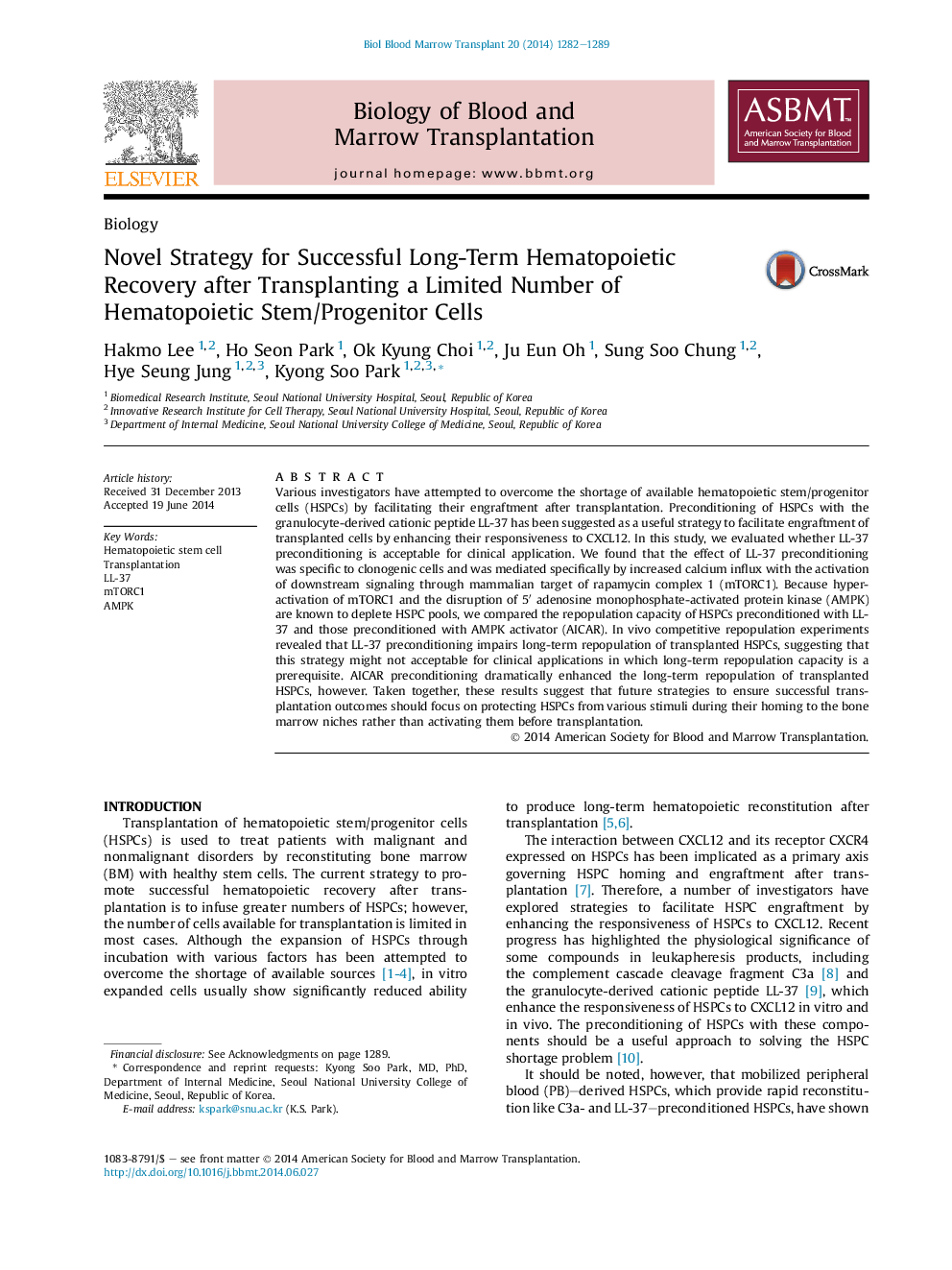| Article ID | Journal | Published Year | Pages | File Type |
|---|---|---|---|---|
| 2101897 | Biology of Blood and Marrow Transplantation | 2014 | 8 Pages |
Various investigators have attempted to overcome the shortage of available hematopoietic stem/progenitor cells (HSPCs) by facilitating their engraftment after transplantation. Preconditioning of HSPCs with the granulocyte-derived cationic peptide LL-37 has been suggested as a useful strategy to facilitate engraftment of transplanted cells by enhancing their responsiveness to CXCL12. In this study, we evaluated whether LL-37 preconditioning is acceptable for clinical application. We found that the effect of LL-37 preconditioning was specific to clonogenic cells and was mediated specifically by increased calcium influx with the activation of downstream signaling through mammalian target of rapamycin complex 1 (mTORC1). Because hyperactivation of mTORC1 and the disruption of 5′ adenosine monophosphate-activated protein kinase (AMPK) are known to deplete HSPC pools, we compared the repopulation capacity of HSPCs preconditioned with LL-37 and those preconditioned with AMPK activator (AICAR). In vivo competitive repopulation experiments revealed that LL-37 preconditioning impairs long-term repopulation of transplanted HSPCs, suggesting that this strategy might not acceptable for clinical applications in which long-term repopulation capacity is a prerequisite. AICAR preconditioning dramatically enhanced the long-term repopulation of transplanted HSPCs, however. Taken together, these results suggest that future strategies to ensure successful transplantation outcomes should focus on protecting HSPCs from various stimuli during their homing to the bone marrow niches rather than activating them before transplantation.
